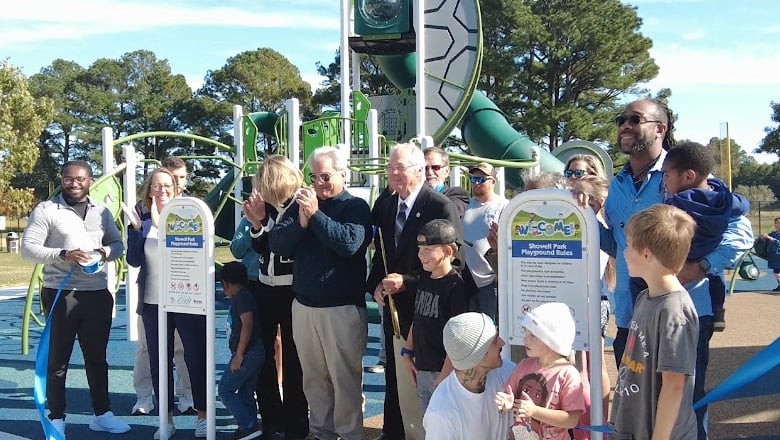Md. Commerce Secretary visits Salisbury, outlines current success and future challenges
SALISBURY, Md. – Maryland’s Secretary of Commerce visited Salisbury Thursday morning and met with local leaders. Secretary Kevin Anderson outlined current success and gave insight into future challenges.
Local Leaders
The Secretary identified the City of Salisbury and Wicomico County as regional leaders in terms of economic development.
“The airport is here, Chesapeake Shipbuilding is a vibrant leader. That’s why when we look to our regional economies, Wicomico and Salisbury are always right there,” Secretary Anderson said. “We have 24 jurisdictions, but there is some real regional leadership that we have [here.]”
Part of what’s making that success possible is the pipeline of skilled workers that local colleges and universities are providing. Salisbury Area Chamber of Commerce President Bill Chambers said the future is looking strong for both blue and white-collar professionals on the Lower Eastern Shore.
“Those thousands of undergraduate and graduate students are all pursuing careers. The real challenge is figuring out how we keep those people and those talents here,” Chambers said. “Salisbury wants to be a big city, too. And with the development that’s planned in Salisbury, it’s going to look completely different in five years.”
Manufacturing, in particular, is one industry being supplied by that source.
“There are sectors of it in Montgomery County and Howard County, but in one concentrated area, this is it over here,” Chambers said.
State Supports
And for those with an entrepreneurial spirit, the state has several supports in place to ensure their success.
The Build Our Future Program, Secretary Anderson says, will help the state stay on the cutting edge. It provides matching grants of up to $2 million. 11 projects worth $9 million in total were approved in the first round.
And, the Maryland Manufacturing 4.0 grant program provides grants to small and mid-sized manufacturers. To be eligible, those businesses must invest in Industry 4.0-related technologies and digital business practices. 20% of the funds are reserved for small manufacturers with three to 40 employees, with awards between $25,000 and $500,000.
Maryland is also in the midst of a workforce attraction campaign, focusing on young professionals. And on an international scale, the Maryland Global Gateway Program is helping to attract investment from around the world. Secretary Anderson said that more than 60 companies from six continents have already applied.
“Those are very targeted and intentional funds to make sure that our small businesses, women-owned businesses, minority-owned businesses, veteran-owned businesses, and every space in that infrastructure have the support of being able to seek funding and opportunity,” Secretary Anderson said.
Challenges Coming
Even with success, challenges remain in the future.
Secretary Anderson stated that Maryland needs to make its economy more competitive, as it strives to return to pre-pandemic levels. Investments in affordable housing, education, and infrastructure will all be key in that work, the Secretary said.
“There are some fiscal challenges on the horizon—and the governor has said this—about making sure that our economy keeps up with our ambition,” Secretary Anderson said. “While we are still maintaining a very strong vision, being very opportunistic, making sure that our economy is going to be very competitive, robust, and equitable, at the same time we have to be really good stewards and make some hard decisions.”
Looking Ahead
Chambers echoed those concerns but added that the Eastern Shore’s unique strengths could put it at an advantage.
“We’re so close to two other states—Virginia and Delaware,” Chambers said. “So, continuing to build the infrastructure and industries here will keep this part of Maryland competitive.”
“I worry that we’ll see federal agencies moving away from the District of Columbia, northern Virginia, and Maryland suburbs because of the cost of doing business,” Chambers said.
Something else that the business sector has been keeping tabs on is the Federal Reserve’s recent interest rate cut. Chambers says the sector is still wondering if there will be another cut, and if this most recent one was enough. All important questions, Chambers says, to answer when navigating future success.
“While I think our business community is cautiously optimistic, I think they’re all realists now,” Chambers said. “You need to be prepared for anything.”


